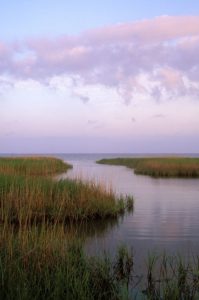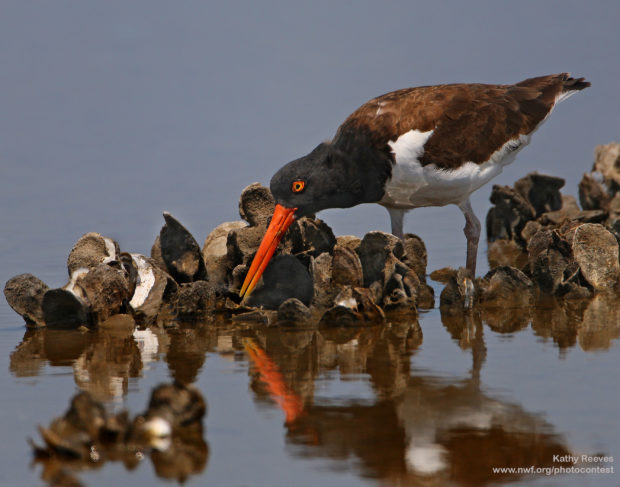We have much more to do and your continued support is needed now more than ever.
Where Rivers Meet the Sea

The estuaries of the Gulf of Mexico have taken many hits over the past century. Water quality has declined. The rivers that flow into them have been dammed, leveed or diverted. Oyster reefs have been over-harvested. Wetlands across the Gulf—particularly in the Mississippi River Delta—have been lost.
Recently, BP agreed in principle to settle all federal and state claims against it for its actions in the Deepwater Horizon case, making billions available for restoration. Using these dollars to restore the Gulf’s estuaries will improve the food web throughout the Gulf of Mexico while improving quality of life and boosting the economy on the Gulf Coast. These dollars should be spent on projects—such as the ones outlined in the report Restoring the Gulf of Mexico for People and Wildlife—that fall into one of the four general categories outlined below:
Restore the Balance between Fresh and Salt Water
Over the past hundred years, most of the major rivers that flow into the Gulf of Mexico have been substantially altered in one way or another. Many rivers have been leveed, or dammed, or deepened and straightened by dredging, their seasonal cycles of flow altered, and their water diverted for cities, agriculture or navigation. Restoring the natural flows of fresh water and sediment into coastal estuaries will greatly benefit fish and wildlife both along the coast and in the deeper Gulf waters.
Restore Wetlands
Wetlands play a critical role in the Gulf ecosystem—providing wildlife habitat, filtering pollutants and protecting communities from storms. Wetlands also support the commercial and recreational fishing industries. Wetlands and marshes across the Gulf Coast are at risk, but the problem is most pronounced in Louisiana’s Mississippi River Delta. These wetlands are eroding or sinking at an alarming rate, in part because levees erected for flood control prevent the Mississippi River from building and sustaining land in its delta. Projects to strategically re-introduce sediment and fresh water from the Mississippi River into the delta could rebuild or protect as many as 300 square miles of wetlands by 2060.
Restore Oyster Reefs
Estuaries like the Mississippi Sound and Pensacola Bay are estimated to have each lost more than 90 percent of their historical oyster reefs. This isn’t just bad news for seafood lovers, it’s bad for wildlife and water quality as well. One adult oyster can filter as much as 50 gallons of water a day and oyster reefs provide habitat for juvenile fish of numerous species. Therefore, restoring oyster reefs along the Gulf will improve water quality and clarity and create habitat—all while protecting shorelines from storms and erosion.

Protect Critical Landscapes
The Gulf Coast’s five states boast a rich diversity of habitat types: barrier islands, beaches, dunes, marshes, forested wetlands and coastal prairies, among others. With 86 percent of these lands in private hands, landowners can play an important role in the long-term recovery of the Gulf Coast—restoring marshes and long-leaf pine forests, supporting efforts to protect water quality, or just setting land aside for the benefit of wildlife. These private-landowner actions should be encouraged, and where appropriate, key parcels of coastal lands should be purchased and managed to protect their natural resource value and support the long-term health of the Gulf Coast.
The fines and penalties from the Deepwater Horizon could and should be used to benefit the health of the Gulf of Mexico for people and wildlife. The RESTORE Act provides the means by which the states and federal government can work together through the RESTORE Council to make sure various funds are coordinated for maximum benefit. It’s up to us to make sure that happens.
Information in this post comes from NWF’s recent reports: Restoring the Gulf of Mexico for People and Wildlife: Recommended Projects and Priorities and Five Years & Counting: Gulf Wildlife in the Aftermath of the Deepwater Horizon Disaster





















